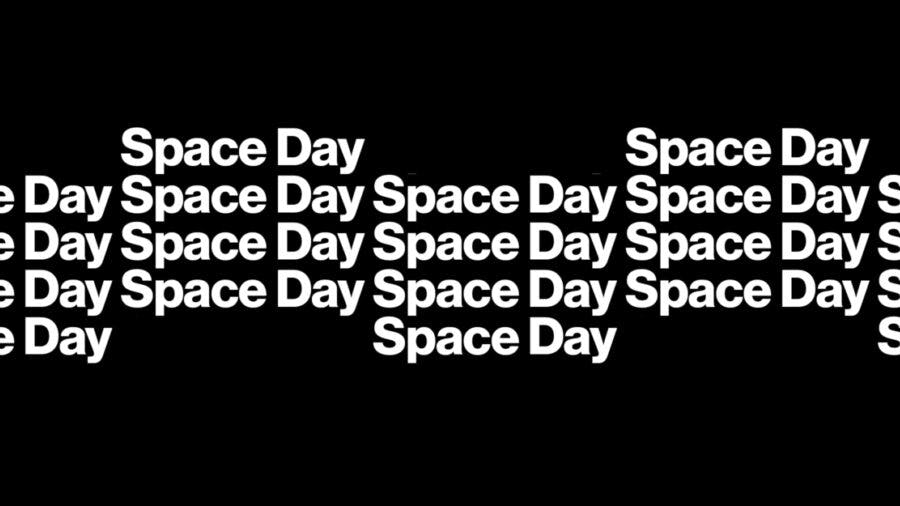

Space Day
Part of April School Vacation Week and presented In conjunction with Massachusetts Space Week, come for the day, or just for a bit. Free with Museum admission.
Saturday, April 20
Here's the lineup:
Humanity United with MIT Art and Nanotechnology in Space (HUMANS)
11:00am - 1:00pm
Explore the significance of space and the power of art, nanotechnology, and global representation. Attendees can view the six-inch HUMANS silicon wafer that has made it back from the International Space Station (ISS) and meet the MIT team who conceived of this modern take on NASA's famous "Golden Record."
Solar Gazing with MIT Astrogazers
11:00am – 2:00pm
Note: this will take place in the MIT Open Space, just outside of the museum
Flying Helicopters on Other Worlds
11:00 am – 12:00 pm
The Ingenuity Mars Helicopter achieved powered, controlled flight on another planet for the first time and completed 72 flights before its mission ended in January 2024. Learn about the engineering challenges of flying rotorcraft in conditions vastly different from those on Earth, and hear the latest news on the Dragonfly mission that will send an octocopter-mounted flying laboratory to Saturn’s moon Titan with featured speakers Dr. Tommy Sebastian, engineer at MIT Lincoln Laboratory, and Dr. Sam Birch, planetary scientist at Brown University.
Maker Hub: Space-themed Automata
12:30pm – 4:30pm
Explore and experiment with mechanical motion as you create your own space-themed kinetic sculpture! Along the way, discover how simple mechanisms like cams, linkages, and levers work to generate different types of movement.
Black Hole Echoes: Music from the Cosmos with Joheen Chakraborty
1:00pm – 3:30pm
Learn how astrophysicists use echoes of light, in analogy to how bats use echoes of sound, to map out the extreme-gravity environments of warped spacetime near supermassive black holes!
Unsung Heroes of Apollo: Panel Discussion
1:00pm – 2:30pm
Know what an IRIG or PIPA are? How about IMU and AGC? Come hear the pioneers of the MIT/Draper Apollo effort to build the technology that got humans to the moon and back—safely! Debbie Douglas, director of collections at the MIT Museum and Rebecca Carpenter, Draper Laboratory archivist will moderate a special panel discussion celebrating the famous “I-Lab” team. In addition to panelists, we have invited surviving “Apollonauts” to join us that day so you’ll have plenty of opportunities to learn the fascinating stories behind those NASA-speak terms of the space program.
Navigation for Moon Walks: Keeping Astronauts Safe Without GPS
2:00pm - 4:00 pm
How will astronauts explore the moon without GPS or Google maps? Join us for a discussion about Draper's ongoing research with NASA studying how the astronauts of Artemis III and beyond can explore the moon safely without getting lost. Includes demonstration of prototype lunar surface navigation system.
Talks by the MIT Astrodynamics, Space Robotics, and Controls Lab
2:00 pm – 3:00 pm
Space Population – A Peek into Future by Di Wu
Rather than a temporary visit from human beings, space has its population. What you can’t see is the thousands of bits of space objects that circle our planet – remnants of past scientific and technical endeavours as well as working satellites of various size, shape, and function, evidence of five decades spent in space. What does the increasing presence of space objects in circumterrestrial space hold for safety and sustainability? What does its evolution hold for human space development? Where is the future for this space population?
Who’s Following the Rules in Outer Space? with Thomas Roberts
Satellites in outer space provide invaluable resources to communities on the ground—from high-speed brandband internet to tools for detecting a nuclear strike—but operate in an environment outside of any country’s national territory. To ensure that everyone can access space and benefit from its resources, United Nations member states have agreed to a number of rules that govern their space activities. Thomas’ talk describes some those rules and shows how practices from traditional astronomy research can help us check how well they're really being followed.
